Lower back pain is one of the chief complaints among people who do kettlebell swings incorrectly.
Today, I wanna show you the most common reasons why you may experience lower back pain while doing kettlebell swings, and (most importantly) explain how to fix them.
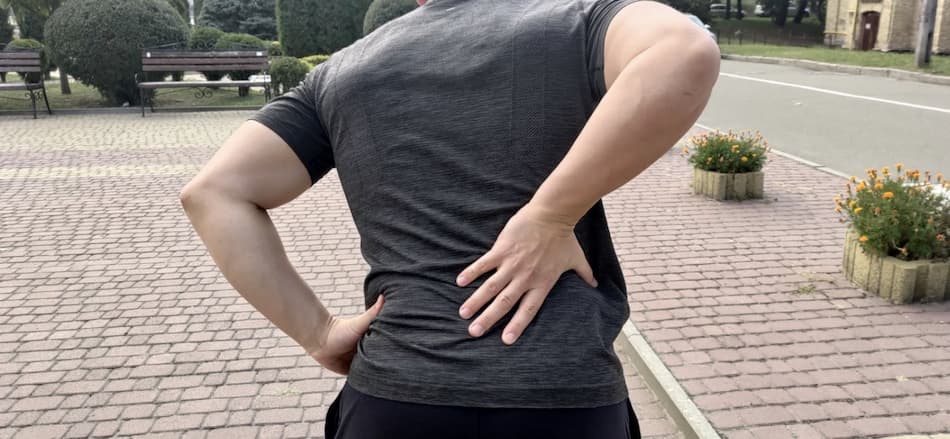
Kettlebell swings are generally safe for the lower back, as long as you do them correctly. This is a hip hinge exercise that requires a decent level of flexibility, mobility, and technical skills to perform this exercise correctly. Like with any exercise, doing kettlebell swings with poor form can lead to pain in the lumbar spine.
Here is my brief answer, but if you wanna know more about the most common causes and solutions for this problem, keep reading.
Are kettlebell swings bad for your back?
In general, kettlebell swings are not bad for your back. It’s quite the opposite.
According to Kenneth Jay, Ph.D., a biomechanics expert from Denmark, kettlebell training not only reduces pain in the neck and shoulders but also can reduce pain and improves muscle strength of the low back.
One of the reasons why kettlebell swings are so therapeutic (rather than detrimental) to the lower back is because of the dynamic hip hinge movement that creates rapid muscle activation and relaxation cycles.
Those cycles create compression that has a beneficial effect on the back muscles.
Dr. Jay says.
After 8 weeks of doing kettlebell training 3 times per week almost all of the participants who previously experienced occupational lower back problems noticed a significant decrease in symptoms.
So why does my back hurt?
Of course, this is just one side of the story because many people actually do have back pain after doing kettlebell swings.
You need to keep in mind that people who participate in the aforementioned studies, perform exercises under strict supervision in a laboratory setting, which may not always reflect real-life situations from regular people.
- Most people who have back pain after doing kettlebell swings do not train with a personal trainer or physiotherapist (so they don’t have someone to check on their form).
- Most people who have back pain after exercise usually do it becasue of poor technique, lack of sufficient warm-up, or a sedentary lifestyle that causes muscle tension.
- Plus, people come from different backgrounds. They may have a history of injury that is preventing them from doing certain exercises.
In other words, there are many people who can develop lower back pain from doing kettlebell swings, despite scientific literature showing otherwise.
Why do kettlebell swings hurt my back?
One of the most common reasons why your back can hurt after doing kettlebell swings is due to lumbar spine flexion, and not the hip extension movement.
In the picture below you can see me doing grossly exaggerated lumbar spine flexion (aka rounding my back).
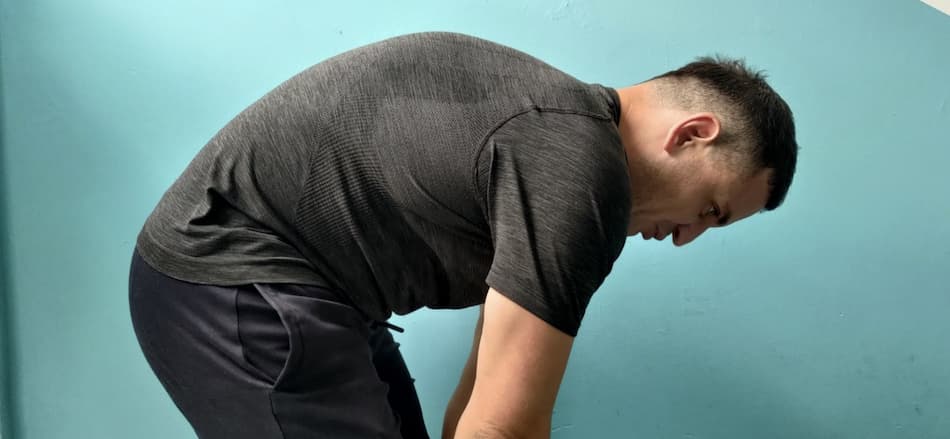
As you can see, the lower back is popping out, which is an open door for injury, especially when using heavy weights.
- This usually happens usually with beginners who forget to keep their back in a neutral position.
- This also happens with people who don’t have sufficient hip and hamstring flexibility to maintain an arched back during the swing.
The kettlebell swing is a hip extension, not lumbar flexion.
You need to maintain your lower back straight
To fix that, issue we need to first understand the cause of the problem. It can be either cueing or flexibility problem.
Cueing – This is basically a move that you do to “get into the position”.
- Keep your lumbar spine in a neutral position think of it as pushing your butt backward, not downwards (remember, this is not a squat).
- Push your chest up and hinge on your hips, keeping the lower back straight.
Below you can see a picture of me doing a kettlebell swing with the correct form where I push my butt backward while keeping my back in a neutral position.
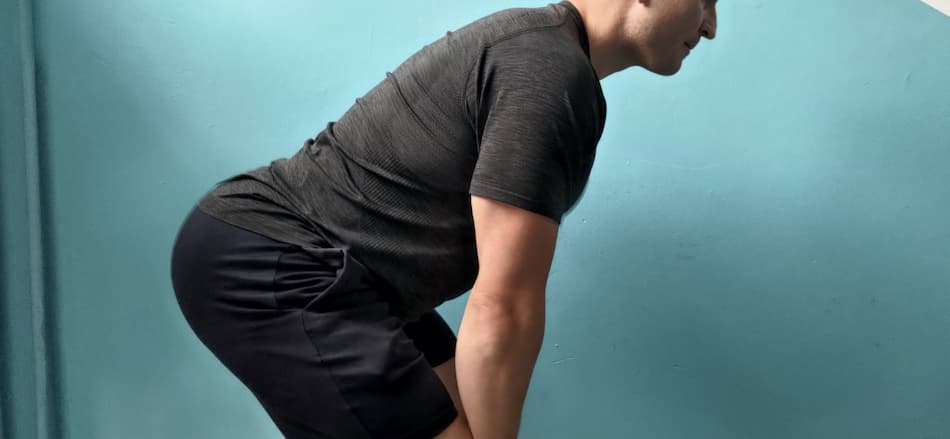
As you can see, here you can see me doing a kettlebell swing with a normal spine position.
- This time, my lower back is straight, and my hips are out.
- This way I put all the load on my hips and glutes and take the pressure off my back.
Flexibility – This is more complicated becasue it’s not an overnight fix.
If your hamstrings and lower back are short, you won’t be able to perform this exercise safely (doesn’t matter how many cues you do).
I had many clients that were very strong, but they were just missing some basic range of motion.
For example.
- They could do well on the bench press, leg press, or shoulder press.
- However, as soon as they do deadlift, squat, or kettlebell swing, the movement was incorrect becasue they’re missing the range of motion necessary for these lifts.
If flexibility is your problem, I recommend hiring a trainer or going to a yoga class to help you restore your range of motion before you put on any load on your lumbar spine.
Doing kettlebell swings faster can also cause back pain
Another common cause of lower back pain after doing kettlebell swings is the tempo of your workouts. For example, doing high-volume reps as fast as possible can lead to poor form.
- The first 10 reps are usually done with a nice form.
- As the intensity goes up, we start to feel more competitive, and we start to forget about the correct form.
- As soon as we’re out of breath, and we hit that muscle exhaustion, I may start to compensate. So then I default to some weird banana shape form (just to get those reps in).
Not good.
Another problem is when you perform kettlebell swings as a part of a complex circuit-style workout where you do multiple exercises back to back.
For example.
- In the CrossFit, Orangetheory Fitness, or F45 gyms, it is very common to see people doing compound movements like squats, jumps, rows, and kettlebell swings one after another, back to back.
- Keeping eye on the form is relatively easy at the beginning, but as soon as you get out of breath, your body awareness goes out of the window and the form can default to less-than-optimal.
PRO TIP: Always think about the form.
- If you train in a group setting, ask someone to look at you and give you an honest opinion about your form (especially when you are almost at the finish line).
- If you train on your own, reduce intensity.
People do squats instead of hip hinge
Another reason why your back can hurt after doing kettlebell swings is that you’re doing the squat movement, not the swing movement.
- Squat means driving the kettlebell below the knee, simultaneously lowering the hips down, rather than pushing out.
- With the squat, we go vertically down, bend the knees, and try to maintain a straight back.
The kettlebell swing is different.
- Keep the kettlebell above your knee level (this will keep your back in the nice, neutral spine position).
- Keep your feet at shoulder distance between each other.
- Keep your knees only slightly bent (you should bend in your hips and most of the work
A properly executed swing comes from your hips and should feel effortless for your lower back.
In this video below, you can see a perfect demonstration of a proper swing.
Keep your neck in line with the movement
Another common fault of doing kettlebell swings is a head position that leads to neck extension.
- You want to keep your head moving along with the swing, in a natural way, without creating a kink in your neck.
- You don’t want to keep your neck facing upward throughout the movement.
See the picture below with the incorrect head position.
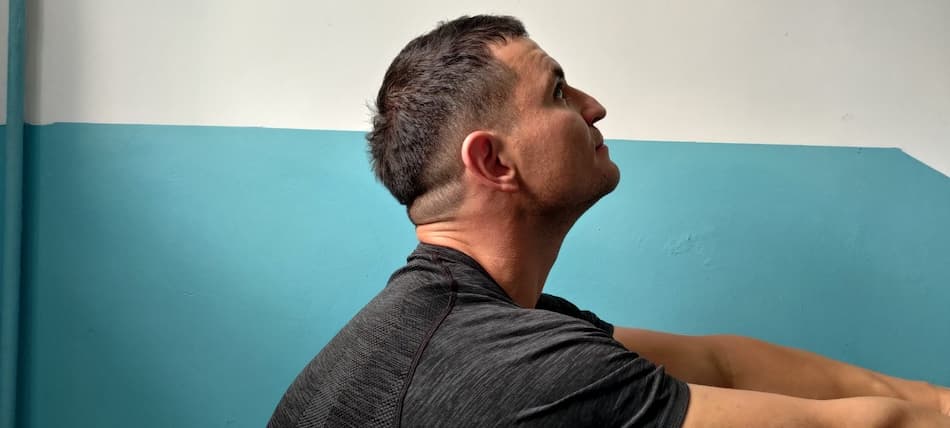
As you can see, here you have my head facing upwards, which creates a kink in the neck. This position not only leads to back pain but also neck problems.
- Stop following the kettlebell all the way up (this will cause a lot of tension).
- Start following the kettlebell, but stop your head once you start to see your feet. And when you swing the bell up again, just look straight ahead.
- Your head should move in a natural way and stop at the shoulder line.
See the picture with the correct form.
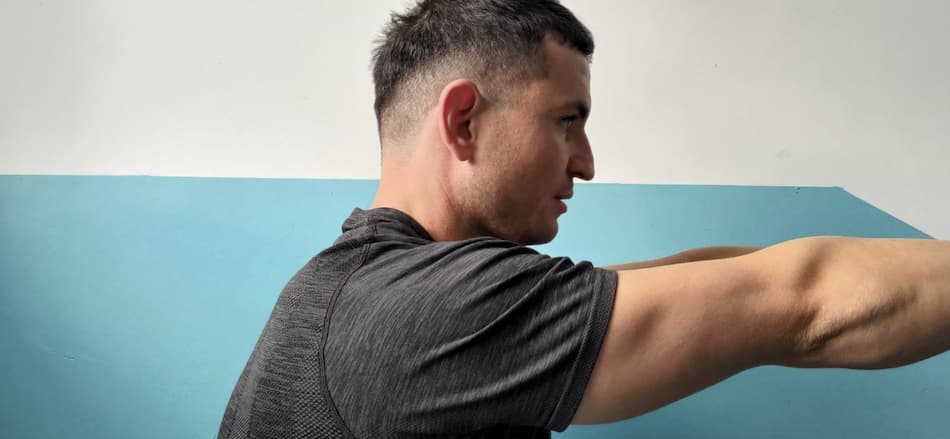
You can learn more about the most common causes of neck pain after kettlebell swings in my article.
Squeeze your butt during the kettlebell swing
One of the reasons why people have lower back discomfort after doing kettlebell swings is becasue they forget to squeeze their buttocks muscles at the top of the hip extension.
Squeezing your butt helps to maintain a neutral spine position and engages your hips, rather than lumbar spine muscles.
- Swing your kettlebell up to shoulders level (this is when your spine should be perfectly straight).
- Keep your knees straight but don’t lock them.
- Keep your head facing forward and squeeze your buttocks muscles (around 8/10 of maximum contraction).
- With high reps, you should feel the “burn” sensation in your glutes (just like you would with a set of glute bridges).
This is gonna activate the muscle, and take the pressure from your lower back into the hips.
Once you implement those cues, then your kettlebell swing training will transform from creating pain in your lower back muscles to strengthening your muscles and lowering the pain.
Kettlebell swings and back pain – Case study
During my research to write this article, I found an interesting story about the IPF World Deadlift Champion, Brad Gillingham, who experienced a devastating back injury.
- He used to pull as much weight off the floor as he could for a single rep, as often as possible.
- This approach led him to severe back issues.
- After 2 years and several failed rehabilitation attempts, he incorporated kettlebell swings into his training.
- Within just a couple of months, he was able to compete again.
My thoughts
In general, you don’t need to be a world champion to benefit from the swings. Some of the commonly known benefits that kettlebell swings offer are fat loss, explosiveness, conditioning, and improved posture.
- If you already have an existing problem and your symptoms get worse after doing kettlebell swings, it’s better to stop doing this exercise and talk with your doctor.
- If you don’t have a problem but you did experience back injury in the past and you’re sensitive and careful about which exercises should you choose, consult with your physiotherapist.
- I personally never had any back problems and I don’t feel any lower back discomfort from doing kettlebell swings.
- From the research that I did online, I can say that kettlebells can be a great rehab tool, as well as a strength tool.
The weight
In general, the weight of your kettlebell should depend on a number of actors like strength level, fitness level, and gender.
For example.
- A 70-year-old female, who has never done any formal exercise with weights, should start from 5-10 lbs.
- A 20-something-year-old male, who loves to lift weights, should probably use 30-50 lbs kettlebells.
- If you haven’t done any weight training at all, then I recommend hiring a trainer for a couple of sessions to make sure you are doing it right.
- Try to assess what is available (in your local gym, in the sports shop) and how you feel about that weight.
For females, I recommend anything from 4 kg to 12 kg.
For males, I recommend 16 kg to 24 kg.
PRO TIP: In one review article published by an MDPI, a group of healthy participants saw significant results from doing kettlebell swings with just 9 lbs.
That shows you don’t need to use a heavy load to get the rewards of this powerful exercise.
Conclusion
- Lower back pain during kettlebell swings is usually caused by poor flexibility and incorrect form.
- Most of the research shows that kettlebell training does improve lower back strength and helps to relieve pain in the back, neck, and shoulders.
- People who experience lower back pain should stop doing the exercise and contact their physiotherapist or doctor.
- If you have an ongoing back problem (herniated disk, spinal stenosis, or piriformis syndrome) you want to consult with your doctor. If your doctor gives you green light, then start by doing some lightweight swings and maybe hire a trainer to work with you on the form.
